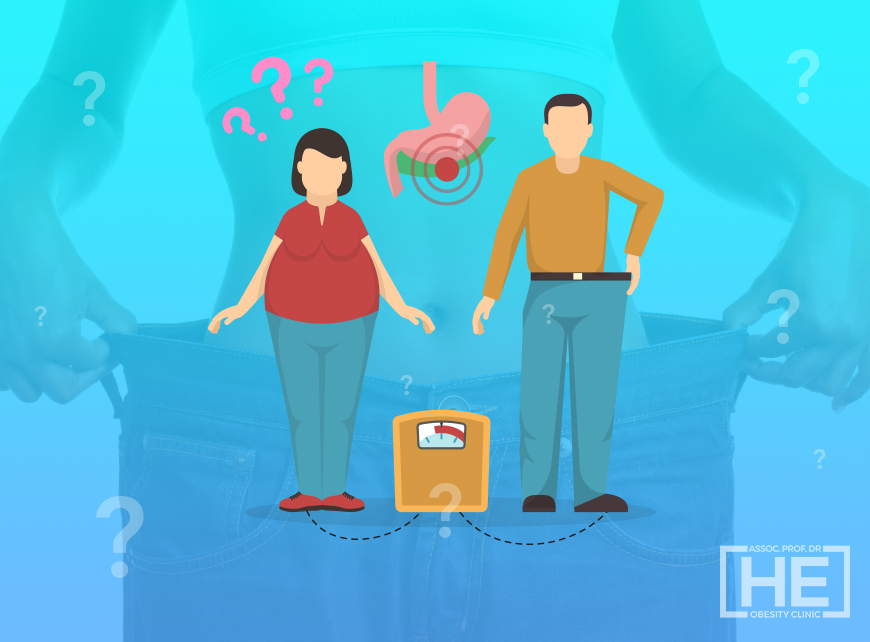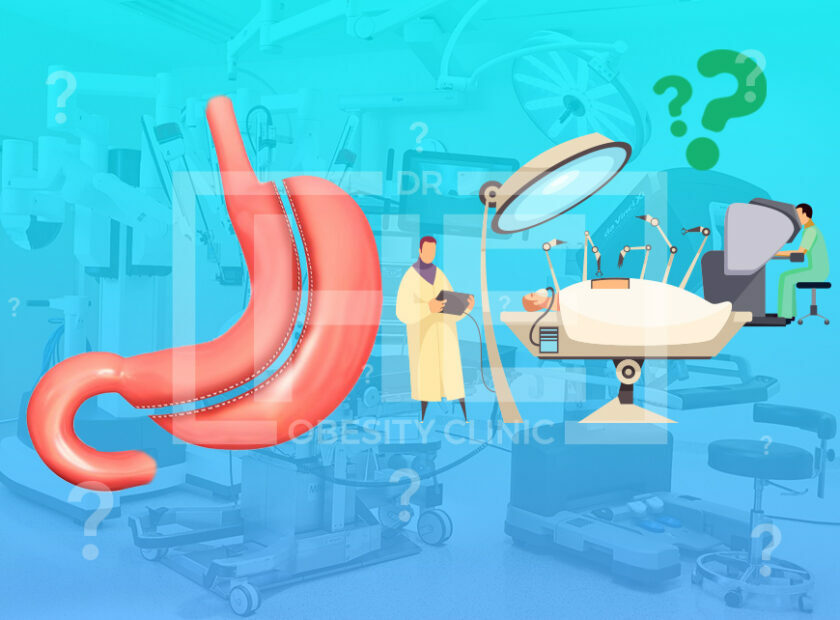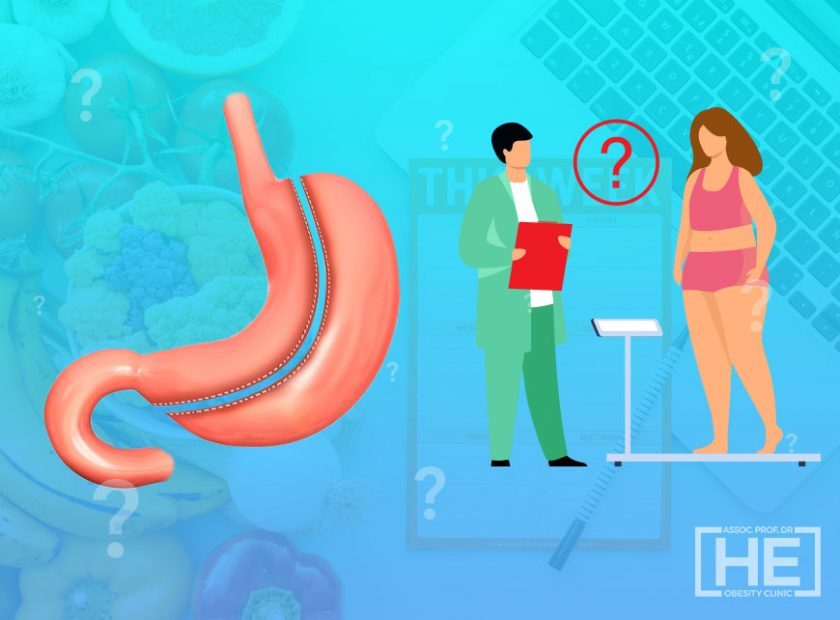In order to decide on the surgery that will be performed in weight loss surgery, it is necessary to learn about the patient’s health status and talk about their expectations after obesity surgery.
It is clear that in order to decide which weight loss surgery to perform, it is necessary to learn about the patient’s health status and talk about their expectations after obesity surgery.
Weight loss surgeries can be a restrictive type in which the volume of the stomach is reduced, or a restrictive and absorption-reducing type that aims to reduce the volume of the stomach and reduce nutrient and calorie intake.
The patient’s body mass index, evaluation of additional diseases, success rates and risks are decided by talking in detail.
There is no weight loss surgery that is considered the gold standard. However, in recent years, tube stomach surgery has become the most commonly performed method.
But the surgeon will make recommendations to the patient in the choice of surgery, taking into account the characteristics of the patient.
Weight loss surgery, scientific name bariatric surgery, consists of many options. For each patient, the appropriate surgical method is determined after various interviews and evaluations performed before surgery.
In determining the appropriate surgical method, the person’s eating and drinking habits and expectation after the operation are decisive. Regardless of the method of surgery performed, patients who have undergone Obesity Surgery want to know exactly how much weight they will lose after surgery.
One of the important subtleties of surgery is the ability to evaluate the patient’s expectations and fully communicate the results of the operation. Some patients can expect weight loss that is actually inaccessible.
On average, the loss of 50-60% of excess weight is a successful and possible goal. The most dramatic changes in weight loss occur in the first 1 year.
The amount of weight the patient will lose during this time depends on some factors. The two golden keys to surgical success are a healthy, balanced diet and exercise, but long-term success depends firmly on how much you follow all the rules recommended to you after surgery.
It should be noted that surgery alone is not a magic wand. Being able to manage the post-operative process and make lifestyle changes will make you successful.
Tackling obesity is a long life-long journey. In doing all this, your life after obesity surgery is not a criminal life, but a pleasant process in which you will experience new experiences, become aware or even specialize in many issues.
After the procedure, patients are usually expected to lose weight. In weight loss surgery, the general goal is to remove the part of the hormone produced that makes patients feel hunger, and accordingly, reduce the hunger sensation in patients, and patients lose weight by eating less.
Patients who easily enter the cycle of eating less and being less hungry should have given about 80% of the excess weight in the subsequent 1-year process. Just as this condition can vary from patient to patient, the average in general is this way.
In addition, patients are expected to completely lose their excess weight within the next 2 years and their body mass index will return to normal.
Due to the removal of the production part of the hormone that causes the feeling of hunger, patients often give the expected result due to both the reduction of the stomach length and the reduction of the feeling of hunger.
When the feeling of hunger begins to decrease in patients, the condition of weight loss usually begins. This condition is considered one of the successful results of weight loss surgery.
Overweight people often lose skin and tissue elasticity as a result of significant weight loss. As a result, loosening and sagging upper arms-flatten the breasts and looks at her nipples in the down position and folding in the lower back area it may extend to the abdominal area, Hip, groin and thigh pockets may cause the leather to sag after significant weight loss body contouring surgery is supported in the shape and tone of underlying tissue and excess sagging fat and skin is removed as a result of the smoothly contoured body in a more normal appearance is provided.
Before deciding to switch to a body contouring operation after a major weight loss, weight loss must be stabilized. -If you continue to lose weight, sagging pockets will continue to form on the skin. -If you regain the possibility of rapid weight gain, the already weakened and thinned skin will be exposed to more stress, due to which stretch marks and extensive scars will be visible.
What to expect after gastric sleeve?
Each operation has a certain degree of risks. In order to avoid or minimize these risks, the patient must be evaluated by the doctor before surgery. Gastric sleeve operations carry the same risk as gallbladder surgery on experienced hands.
Changing your lifestyle after surgery can be achieved by communicating with your doctor, psychological support, and not disrupting your controls.
Surgery allows you to start a new life, but being able to continue successfully depends on the communication and trust between your doctor and you.
What to expect after gastric bypass?
In the first 2 years after gastric bypass surgery, 70-80% of excess weight can be lost. In the long term, 50% or more of excess weight can be lost in most patients. Alignment with dietary recommendations and exercise contribute to the final weight.
It has been documented in long-term studies that excess weight is lost by more than 50% even after 10 years after gastric bypass. In addition, comorbidities or diseases associated with obesity improve significantly.
These rates are higher than 80% in diabetes and more than 90% in sleep apnea. Regardless of the method of surgery performed, patients who have undergone Obesity Surgery want to know exactly how much weight they will lose after surgery.
The answer to this question depends on each patient. One of the important subtleties of surgery is the ability to evaluate the patient’s expectations and fully communicate the results of the operation.
What to expect after a gastric balloon?
After the gastric balloon is inserted, the stomach will begin to cramp, nausea, vomiting after 1-2 hours, as it will try to digest the balloon. This condition may vary in intensity and duration in connection with the person’s pain threshold, it will take an average of 3-4 days.
These are very normal and expected symptoms. This method allows the fat person to lose weight in six months by about 20-25%. At least 2-3 per month, and 15 weight losses can be achieved in 6 months.
With the regular application of diet and exercise programs, a loss of up to 30-40 kilograms can be expected.
It is an important condition that the patients who will be applied the balloon are compatible people and the treatment is successful. The patient should be willing and determined to change his eating habits and lifestyle.
How Long Does It Take To Recover From Weight Loss Surgery?
You may have several questions about how long it takes to recover from weight loss surgery, including how long after the operation you can start exercising. The answer depends on your specific surgery and your recovery goals.
Exercise is important after surgery, but you may be surprised to learn that it can help you recover more quickly than you thought. Getting your blood flowing will improve your healing and discourage blood clots.
Before surgery, you should practice the exercises you’ll need to do after the surgery. While standing at the bedside for the first couple of weeks may hurt, it will become easier as time goes on.
Your recovery will last longer after weight loss surgery than it did before, but you can expect to feel better as the days go on. Your surgeon can give you specific instructions on what to do after surgery.
Your post-op routine should include avoiding heavy lifting or driving until you’ve been off pain medication. Some exercises can even help you improve your personal habits. A healthy diet, plenty of rest, and gentle exercise can help you recover more quickly.
Post-op discomfort is normal. It should gradually decrease, but you should contact your surgeon if it persists. Your surgeon can prescribe you with pain medication and recommend a diet for the recovery period.
The first week after surgery, you’ll be on a liquid diet with a gradual increase in volume and frequency. You’ll need to stick to this diet, as you’ll have to limit solid food for a few days.





